ABOUT HEAD LICE
It is important to know what lice are and their various stages in order to understand what lice look like and what the various head lice pictures on this page refer to.
Although there are many types of lice, the head louse, or pediculus humanus capitis, is a parasitic insect. Parasites are organisms that benefit while its host is harmed. Pediculus humanus capitis is an ectoparasite, meaning it is only found on the outside of the body, and they are only hosted by humans.
Head lice (the plural form of louse) can be found on the human head and less often on the eyebrows and eyelashes. Lice feed on human blood several times a day and live close to the scalp to maintain their body temperature.
Here are some head lice pictures
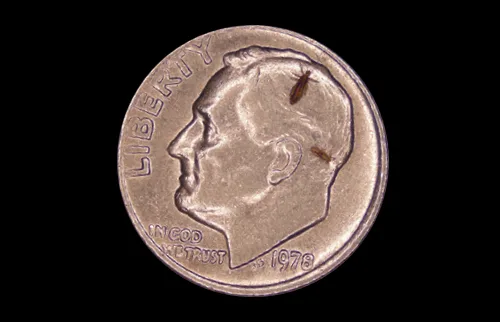
Lice on a dime
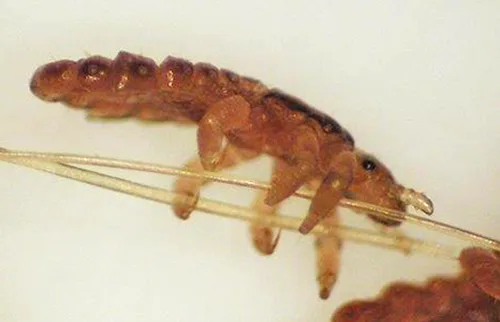
Head Louse Grabbing Two Strands of Hair
A head louse moving along two strands of hair. Notice how it wraps its claws around the hair shaft. Because lice don’t jump, they use their claws to move from the hair of one person to another during head-to-head contact.
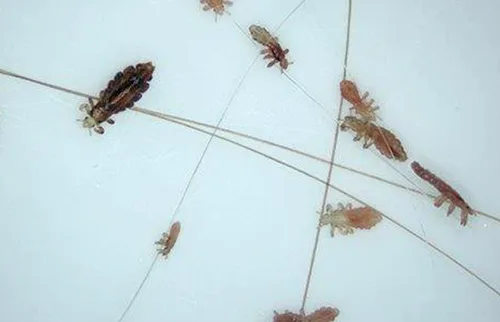
Lice on Hair
This picture shows a number of dead lice on multiple strands of hair. It uses roughly the same magnification as the dime picture.
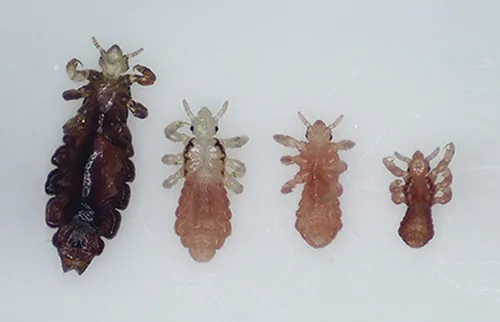
Nymphs to Adult
Four head lice, ranging from three sizes of nymphs to an adult.
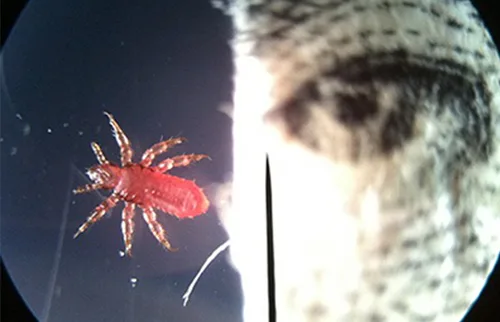
Louse Nymph
This micrograph compares the size of a first-stage nymph with George Washington’s eye on a $1 bill.
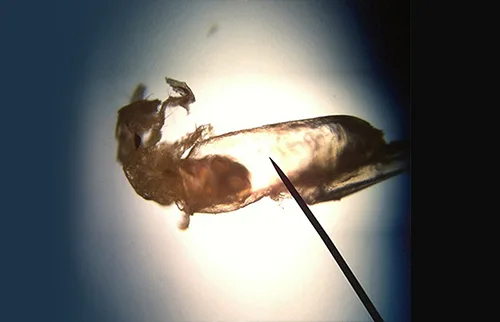
Hatching Nymph
This micrograph (taken by Tabitha L. Allen) shows a nymph that apparently died while emerging from the casing of its egg.
HEAD LICE LIFE STAGES
Head lice have a 3-stage life cycle: egg, nymph, and adult.
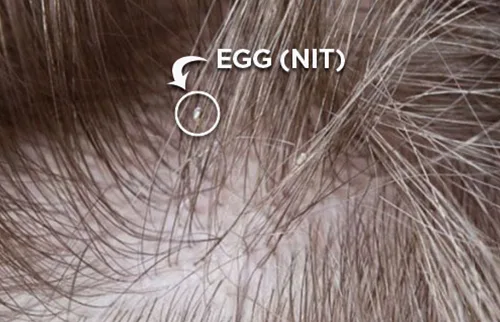
Eggs
The eggs are called nits, and they are laid by adult females on the hair shaft, close to the scalp. Many people also refer to nits as the empty eggshells left behind by a hatched louse. They are white or light yellow in color and oval-shaped. Sometimes head lice eggs can be mistaken for dandruff, but unlike dandruff will not be easily brushed out.
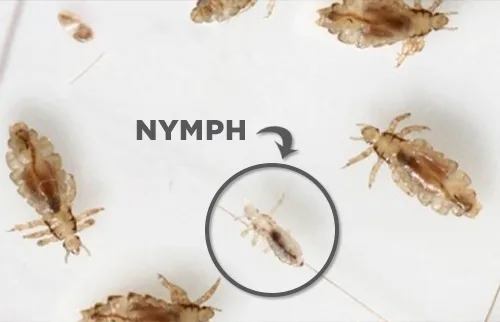
Nymphs
It takes nits 1 week to hatch, and then a nymph emerges. The shell becomes dull yellow, but still stays attached to the hair. Nymphs look like smaller versions of adult lice, and mature within 7 days.
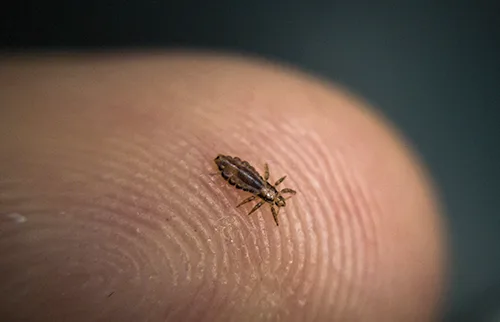
Adults
The adult louse grows to the size of a sesame seed, with 6 legs. They can be yellow or dark brown in color. Adult female lice can lay up to 8 nits daily, and survive for a total of 30 days on the scalp. Adult lice must have access to blood from the scalp a couple of times a day to survive.
To learn more about the life stages of head lice, visit this article by the CDC.
How Lice Get Around In Hair
From hair strand to hair strand
A head louse has six claws that allow it to crawl around from hair strand to hair strand. It can move from one person’s head to another this way, which is why head-to-head contact is the primary way head lice are spread.
How does a head lice infestation start?
Head lice can only survive for 1-2 days without a host, so they must be able to spread quickly. A common myth about head lice is that they can fly or jump – while they cannot do that, they are able to crawl quickly from one head to another. Infestation occurs when a female adult louse crawls onto a new head and lays eggs. When those eggs hatch, the lice will most likely stay on that head throughout the entire lice life cycle.
Where do people get exposed to lice?
Children are most commonly affected by lice infestations. The CDC estimates “6 million to 12 million infestations occur each year in the United States among children 3 to 11 years of age”. While lice are often spread at school, they can also be spread through head-to-head contact at sleepovers, summer camp, or between different members of the home.
Adults are still susceptible, however, the family dog is not to blame; only humans can be hosts for the adult louse. Any time someone with a lice infection has close contact with someone else there is a risk of transmission. The most common way for lice to be spread is through two people briefly touching their heads together. Head lice can also be spread through a hairbrush, wig, or hair accessory, but keep in mind they can only live off of the body without human blood for a day or two.
HOW TO SELF-DIAGNOSE HEAD LICE
How do I know if I have lice?
When a child or loved one has a head lice infestation, they will likely feel a tickling in their hair. Many people are allergic to lice, and this can cause an itchy scalp. This can lead to sores from children scratching, and difficulty sleeping.
What do lice look like in hair?

How can you identify head lice?
In addition to looking for nits, look out for anything crawling through the hair. These would most likely be adult lice. The adult louse is about the size of a sesame seed and varies in color depending on when they last ate, from a grayish-white, tan, or reddish-brown. If you feel like something is crawling through your hair, those might be lice as well. And if your scalp gets red and itchy, you may be allergic to lice bites.
Are lice visible to the human eye?
We often get this question. The answer is yes, lice are visible to the human eye. Look at the hair strands within about a quarter inch (~0.5 cm) of the scalp. Keep an eye out for nits, which will be white or yellow ovals about and about .03-.08mm big. See if you can find lice eggs attached to individual hairs. If you see any, try pulling them off with your fingers. Nits are extremely small and will be glued pretty securely to the hair. Unlike dandruff, head lice eggs will stick to the hair shaft and not be easily whisked away.
How can you get lice and lice eggs out of your hair?
Visit Lice Clinics of America
Where you can be Lice Free In One Hour!
It can be hard to know if you have head lice in your hair. Since you can’t see your own scalp very easily, and because lice can move very quickly and will hide away from light, a head lice condition is hard to self-diagnose. The best thing to do is have someone check your head for you.
At the Lice Clinics of America, we offer screenings as the first step to every treatment plan and would be happy to help you with this process.
- You may want to come into our center and receive our AirAllé® treatment, heated-air lice treatment which kills and removes all lice in under an hour without pain or toxic chemicals.
- We also offer two different at-home treatments, the OneCure™ Home Treatment Kit and the CURE! Lice Remover Kit.


